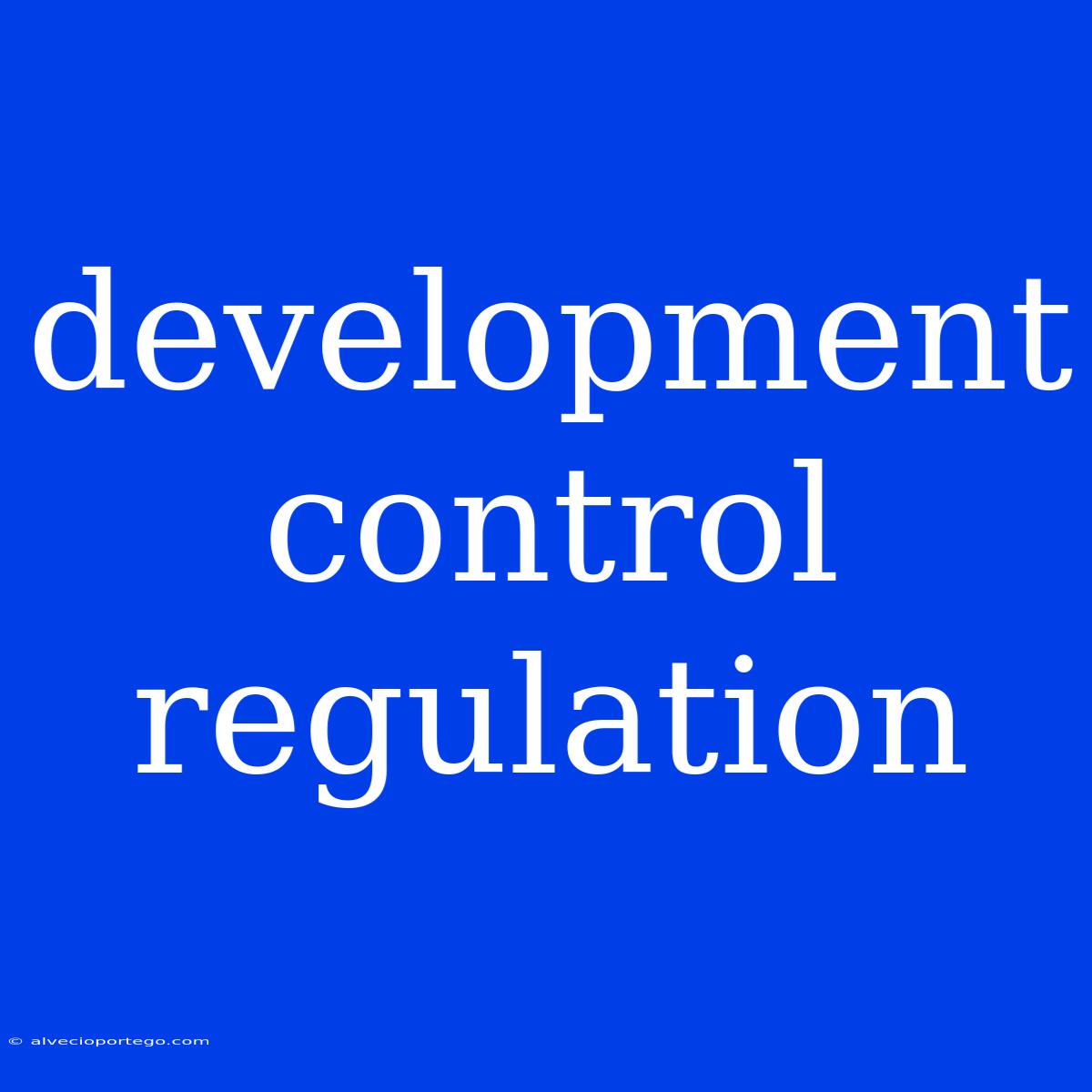Development Control Regulation: Shaping the Future of Our Cities
Development control regulations, often referred to as planning regulations or zoning regulations, are a critical tool used by local governments to manage and guide the growth and development of their communities. They provide a framework for how land can be used, what types of buildings can be constructed, and the design and appearance of development projects.
These regulations aim to balance various competing interests, including:
- Promoting sustainable development: Ensuring development respects the environment, conserves natural resources, and promotes energy efficiency.
- Maintaining public health and safety: Establishing building codes, fire safety regulations, and standards for infrastructure to protect the well-being of residents.
- Protecting historic and cultural heritage: Preserving significant landmarks, architectural styles, and cultural landscapes.
- Enhancing the quality of life: Creating vibrant and attractive communities with access to public spaces, amenities, and transportation.
- Promoting economic growth: Facilitating development that supports local businesses, jobs, and investment.
Key Elements of Development Control Regulations:
- Zoning: Dividing a city or town into different areas with specific permitted uses, such as residential, commercial, industrial, and mixed-use.
- Building Codes: Establishing minimum standards for construction, safety, and accessibility.
- Design Guidelines: Providing direction on the architectural style, landscaping, and other design elements of buildings and developments.
- Environmental Regulations: Setting standards for pollution control, waste management, and protection of natural resources.
- Transportation Planning: Ensuring adequate infrastructure and access to public transportation.
- Historic Preservation: Protecting significant buildings and sites from demolition or alteration.
Benefits of Effective Development Control Regulations:
- Orderly and Sustainable Growth: Prevents uncontrolled sprawl and haphazard development.
- Improved Quality of Life: Creates attractive and livable communities with amenities and services.
- Protection of Natural Resources: Minimizes environmental damage and promotes sustainability.
- Economic Stability: Attracts investment and promotes a healthy economy.
- Preservation of Cultural Heritage: Protects historical and cultural landmarks for future generations.
Challenges to Implementing Development Control Regulations:
- Balancing Competing Interests: Finding a balance between economic development, environmental protection, and community needs.
- Enforcement and Compliance: Ensuring that regulations are consistently enforced and adhered to.
- Flexibility and Adaptation: Allowing for changes in regulations to respond to evolving circumstances and new technologies.
- Public Participation and Engagement: Encouraging community input and participation in the planning process.
The Future of Development Control Regulations:
As cities continue to grow and evolve, development control regulations will need to adapt to new challenges and opportunities. Emerging trends include:
- Focus on Climate Change: Incorporating climate change mitigation and adaptation measures into planning regulations.
- Smart Growth: Promoting sustainable and efficient urban development practices.
- Data-Driven Planning: Utilizing data and technology to improve decision-making and monitoring.
- Community Engagement: Encouraging citizen participation and feedback in the planning process.
Effective development control regulations are essential for creating vibrant, sustainable, and equitable communities. By balancing competing interests, promoting public participation, and adapting to evolving challenges, cities can use these regulations to shape their future for the benefit of current and future generations.

